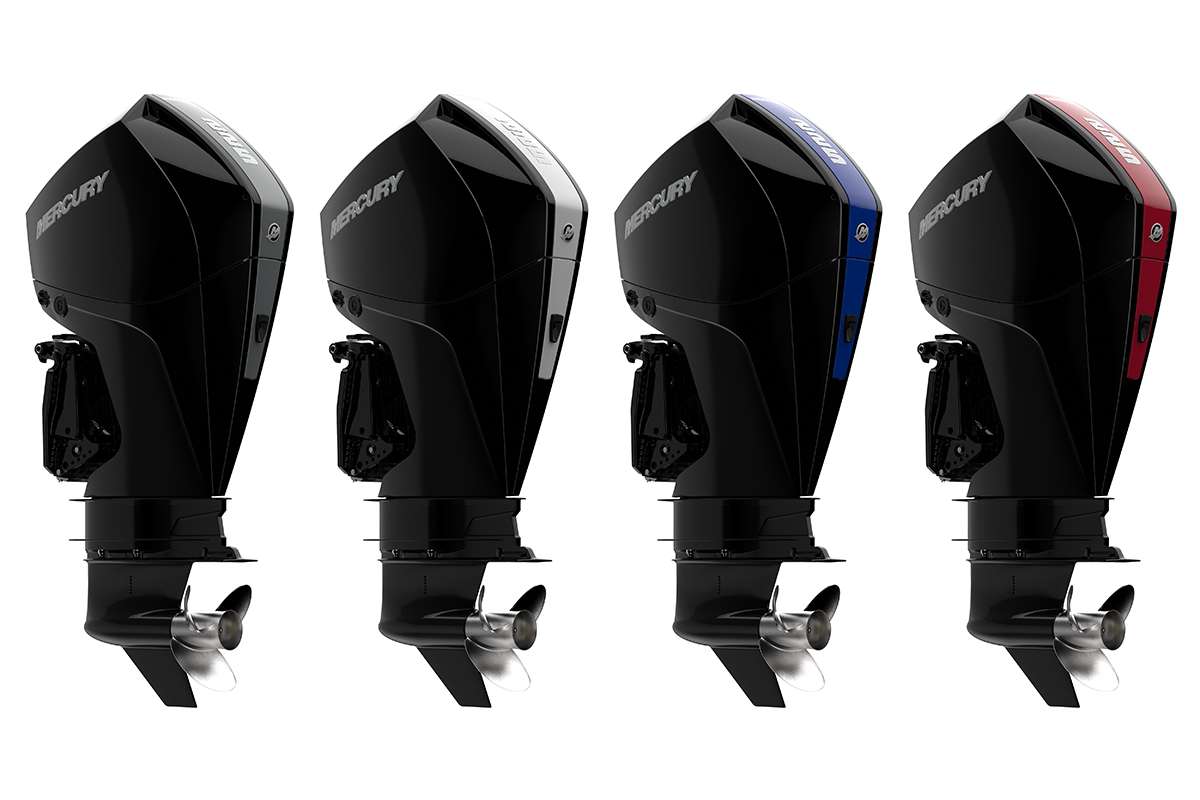
Two weeks before the public launch of Mercury Marine’s new-for-2018 outboard, the company invited a handful of media members to a sneak peek of the engine. As if the intrigue of a highly anticipated new power source wasn’t enough to inspire my attendance, the fact that we would be running the new engine on legendary Lake X in Florida certainly made the trip a priority. Lake X, of course, is where the most famous of endurance tests was performed on a Mercury outboard in 1958, dubbed Operation Atlas. The idea was to run the outboards (Mercury Mark 75s) non-stop for 25,000 miles, otherwise known as the distance around the earth. More than 34 days and 4,516 laps of the lake later, both test boats completed the task. Yes, this was a very cool engine test opportunity, indeed.
The first thing I noticed when feasting my eyes on the new Mercury Four Stroke V6 (yes, that’s the official name of the engine), was the aggressive hard edges of the cosmetics. The cowling looks as though it could be forged of iron, fairly sharp angles of the top cap creating a sleek, rugged appearance. The really important stuff, though, is what Mercury designed under the hood.
Unlike the Verado (Mercury’s flagship 4-stroke), the new V6 is not supercharged. Instead, the 3.4-liter features the greatest displacement in its class, according to Mercury Marine. To the end user, this means there is less work for the engine to produce more horsepower and torque, which results in greater acceleration. Mercury also cut a lot of weight off this engine, with it coming in 10-pounds lighter than all other 4-stroke in the category, again according to Mercury Marine.
Anglers are going to really appreciate the effort Mercury put into enhancing fuel economy. The engine’s Advanced Range Optimization and closed-loop fuel control work together to adjust the fuel mixture and deliver the best possible fuel efficiency. The Adaptive Speed Control feature maintains rpms regardless of load or condition changes. So, you will not lose speed in turns or rough water.
For those anglers who tie in their electronics to their starting battery, the new V6 will help with battery management. The Idle Charge battery-management system automatically increases idle rpms to boost alternator output and recharge low batteries to the proper level.
And here is a really cool new feature: Mercury designed a small door at the top of the cowling that a user can open and check the oil, as well as add oil if needed. No more removing the entire cowling to do simple maintenance.
Another super cool feature of the new V6 is its ability to pair with Mercury’s Active Trim system. If you haven’t heard of Active Trim, it is a feature that identifies your speed, and perfectly trims the motor for optimization. No longer do you have to hope that you have perfectly trimmed your engine for speed. This does it for you.
These design concepts sound incredible on paper. The real test would be how the motor performed on the water. The engine did not disappoint. Although there was not a bass boat on-hand to test, there were plenty of heavy center-console boats available to prove the power of the engine. I rode in a bunch of them. But a 19-foot bay boat probably gave me the best comparison to how the engine would perform on a bass hull.
The hole shot was scary impressive. If a passenger wasn’t holding on, he’d end up in the floor. Taking sharp turns and watching the tachometer proved the Adaptive speed control was a winner. And having never before experienced the Active Trim feature, I was amazed. I tried to manually adjust the trim at both top speed and cruising speed, and never could I beat the Active Trim levels.
Another aspect of the driving experience, as goofy as it sounds, was the actual sound of the engine. The noise was just right. The engine is super quiet and the engineers of Mercury eliminated the frequency that would interfere with communication (I had a conversation at full throttle without yelling), but maintained the growl you want to hear when you put the hammer down. This is a quiet engine … but it still sounds powerful.
And last but not least, especially for those of us who like our rig to look good, is the color options available for the engine. Mercury added easy-to-apply color accent panels (a racing stripe down the middle of the cowling) so anglers could match the hull color of their boat. Standard panel colors are blue, silver, gray, red and black. If you want your rig to be even more personalized, you can opt for the ready-to-paint panel and have custom work done to perfectly match your boat color.
Initial horsepower offerings of the new outboard will be 175/200/225.





